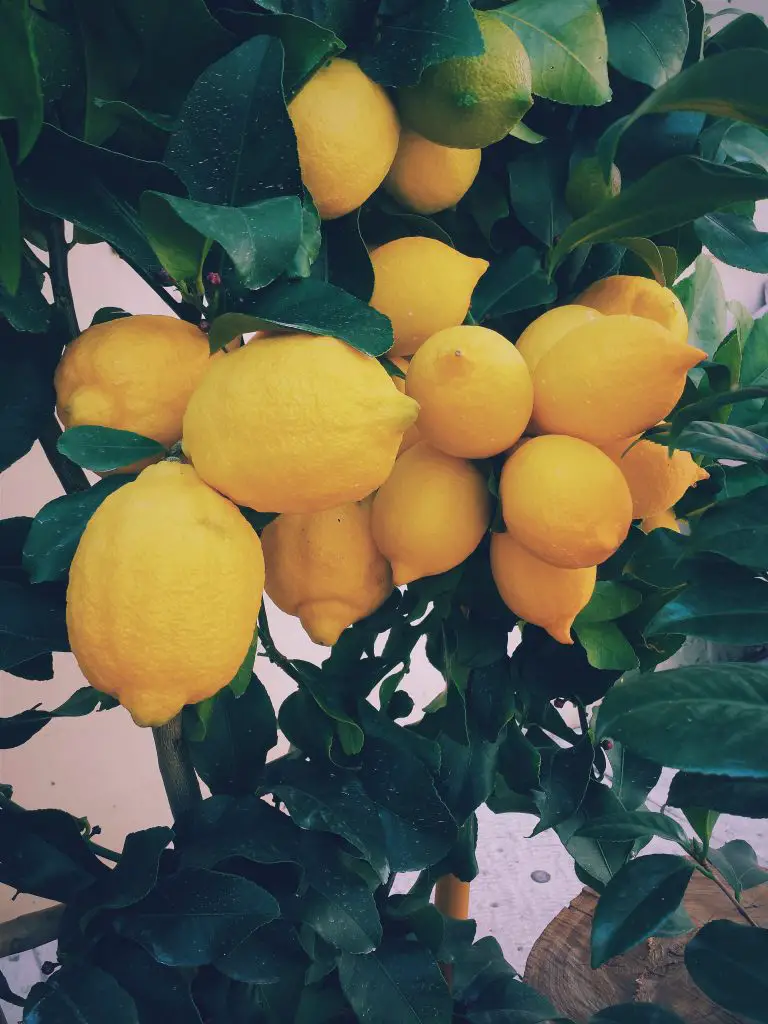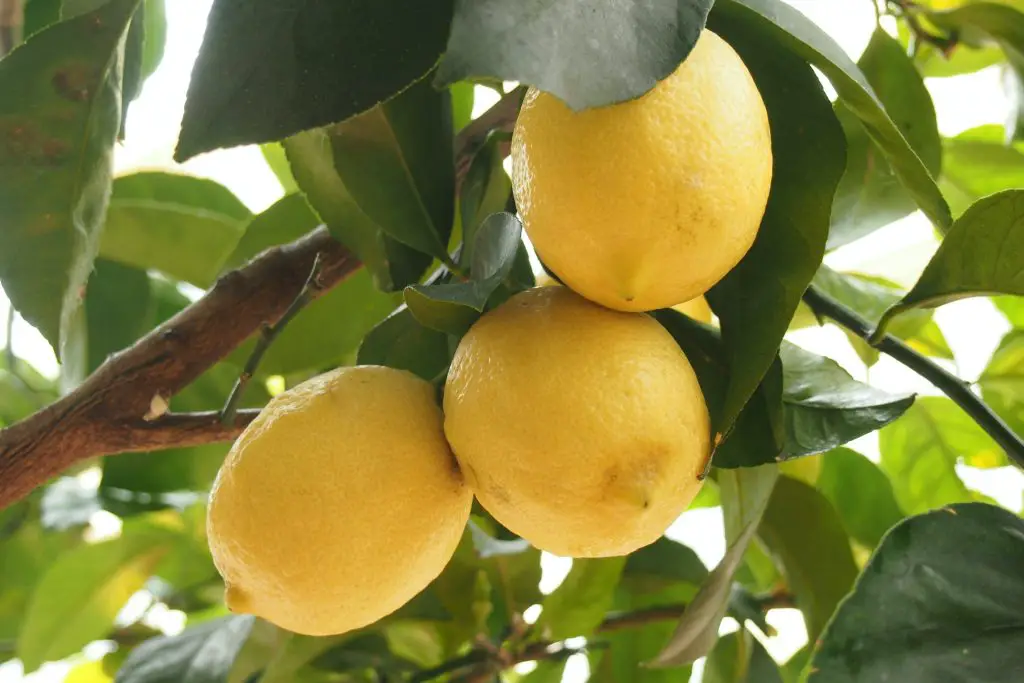What Is The Lowest Temperature A Meyer Lemon Tree Can Tolerate? The Meyer lemon tree is one of the most popular fruit trees and is a common feature in many people’s backyards. However, whether you can have one is limited by the climate you live in as the Meyer Lemon tree is not as tolerant of cold as many other types of fruit trees such as pears, apples, and plums. So what is the minimum temperature that a Meyer Lemon tree can tolerate?
Meyer lemon trees should not be in locations where the temperatures fall below 25°F (-4°C) for an extended period of time. While the tree will survive at temperatures below this level the damage sustained in these temperatures would be considerable, which means the tree would be unlikely to produce a reasonable crop.
At 28 to 30°F (-1 to -2°C) the Meyer lemon tree will begin to be negatively affected as young fruits and flowers are destroyed at this temperature and mature fruit are badly damaged. At the more extreme temperatures of 21 to 25°F (-4 to -6°C) the tree will suffer defoliation and at 19°F (-7°C) wood of the tree itself begins to be damaged.
The optimum temperature to grow a Meyer lemon tree is approximately 77 to 86°F (25 to 30°C) and the lemon tree is relatively tolerant of high temperatures with lemons being grown commercially in regions such as the northern parts of Australia.
In addition to cold temperatures, Meyer lemon trees are also sensitive to windy conditions. Strong cold winds are known to significantly reduce yields and damage fruit. The trees are best planted in a sheltered location as their relative slender branches have a tendency to get damaged particularly when they are fully laden with fruit.
If your climate does not allow a lemon tree to be grown outside the other option is to grow the tree in a pot which can be moved indoors in winter. To read more about when to move a lemon tree indoor click here.

Are They Other Varieties Of Lemon Trees That Are More Cold Tolerant?
There are three main varieties of Lemon trees, Eureka, Lisbon, and Meyer, of these varieties the Meyer lemon is the most cold and frost tolerant variety. The reason for this is that the Meyer is not actually a true lemon it is a hybrid between an orange and a lemon.
As oranges tend to be slightly more cold tolerant than lemons this improved temperature tolerance has been passed down to the Meyer Lemon tree. The meyer variety was first introduced to the United States in the early 20th century from China and became popular with home gardeners as a result of it being thornless and having a less acidic flavor than Eureka and Lisbon which are “true” lemons.
Of the other two lemons, the Lisbon lemon is generally the hardier variety displaying a greater tolerance for both hot and cold heat conditions. The Lisbon lemon, which originated ‘Portugal’ in Morocco and appeared in regions like the US and Australia in the 1840s, is also more tolerant of windy conditions than the Meyer lemon because it produces fruit within the canopy which reduces the chance of damage. However, it is an extremely thorny tree.
The Eureka Lemon, first developed in the 1850’s in Los Angeles is the least tolerant of cold conditions and is best suited to milder climates both hot and cold as the fruit is more prone to sunburn.
How To Grow A Lemon Tree
Lemon trees are relatively easy plants to grow and do not require a lot of ongoing maintenance. The first consideration is the location of the tree, Lemon trees require a sunny location with at least 6 to 8 hours of direct sunlight per day. If the sunlight is below these levels the tree will survive but will struggle to produce flowers and set fruit.
Additionally, it preferable to select sheltered locations as strong winds can damage the tree and disrupt the pollination process. It is also important to note that Lemons can also be planted in a relatively confined space if the tree is espaliered. Espaliering is a pruning technique the limits the size of the tree while optimizing the output, to learn more click here.

Soil Conditions
Lemon trees prefer a rich well-drained soil that contains plenty of nutrients and is slightly acidic. If your garden has heavy clay-based soil it may be also necessary to modify the soil to improve the drainage as Lemon trees will not tolerate poorly drained soil.
In extreme cases, it may be necessary to modify the soil by incorporating gypsum to act as a “clay breaker” this will reduce the size of the clumps of clay. Additionally, large amounts of compost and agricultural grit may need to be added to further improve drainage.
Any alterations to the soil should be done within a 3 ft radius of where the tree is to be planted otherwise the water hold capacity of the surrounding soil will ensure the conditions remain quite wet.
To further improve drainage in these types of conditions a planting mound can be created for the tree. This will elevate the rootball tree improving drainage.
Planting The Lemon Tree
Lemons tree can be planted at any stage during the year but the best time is in Spring once the weather is beginning to warm up. This allows the tree to establish its root system before the heat of the summer arrives.
To plant the tree dig a hole that is about twice the width and depth of the container the tree came in. Place the tree in the hole at the same depth as it was in the pot after lightly teasing the roots out with your hands. Backfill the hole with soil firming it down as you go to ensure there are no air pockets around the rootball.
Water the tree thoroughly and then cover the soil with a thick layer of mulch, 2 to 4 inches thick is ideal. When placing the mulch in position ensure that it does not come into contact with the trunk of the tree as this can cause collar rot.

Caring For Lemon Trees
Lemon trees are most susceptible to drying out in the first season and need to be watered regularly in the summer months when it is hot. It is best to do this at least once a week in the first season after this period the watering can be reduced when the tree’s root system has become established.
As citrus trees are quite hungry plants that require regular fertilization of the trees. This is best done by fertilizing with pelleted manure every 2 to 3 months in the growing season. The fertilizer should be spread evenly around the drip zone of the tree and watered in well.
In terms of pruning, there is no specific pruning regime like some other fruit trees unless have espaliered the tree, click here for more information. However, Lemon trees do benefit from a light prune once a year as it encourages regrowth.
In addition to this, it is advisable to remove dead and diseased wood. The most common disease is gall wasp which creates lumps along the branches and needs to be cut out every year.
Related Articles
How Much Fruit Does A Lemon Tree Produce?
Can I Leave My Lemon Tree Outside In Winter?
What Is The Lowest Temperature A Meyer Lemon Tree Can Tolerate?
7 Easy Steps To Creating An Orchard In Your Own Yard
